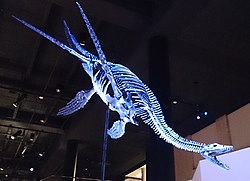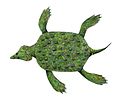| Plesiosaurids Temporal range: Early Jurassic - Late Cretaceous? | |
|---|---|
 | |
| Plesiosaurus skeleton | |
| Scientific classification | |
| Kingdom: | Animalia |
| Phylum: | Chordata |
| Class: | Reptilia |
| Superorder: | † Sauropterygia |
| Order: | † Plesiosauria |
| Superfamily: | † Plesiosauroidea |
| Family: | † Plesiosauridae Gray, 1825 |
| Genera | |
| |
The Plesiosauridae are a monophyletic family of plesiosaurs named by John Edward Gray in 1825. [1] [2]






